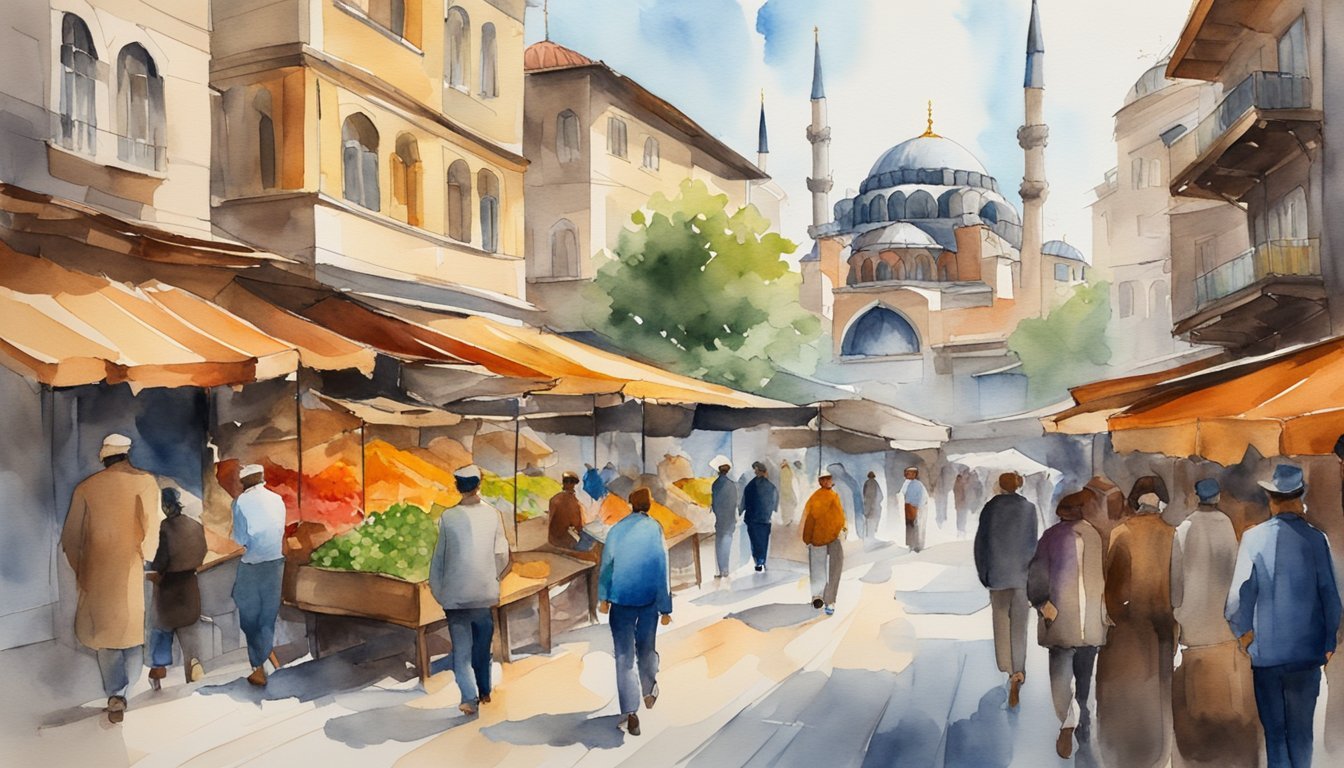Discovering Istanbul
Istanbul offers a captivating blend of culture and history, uniquely straddling two continents. This city, with its profound geographical and historical importance, is an enchanting metropolis that beckons explorers to immerse themselves in its myriad wonders.
Geographical Essence
Istanbul is the only city in the world to span two continents, Europe and Asia, divided by the scenic strait of the Bosphorus. The Bosphorus not only links the Black Sea to the north with the Sea of Marmara to the south, which then connects to the Mediterranean via the Dardanelles, but also separates the city’s European side, known for its historical sites and vibrant city life, from its Asian side, which is characterized by its beautiful landscapes and residential areas. This unique geographical location has made Istanbul a vital trade hub and melting pot of cultures. The Golden Horn, an estuary, divides the European side’s historic center from the newer part of the European Istanbul, further enriching the city’s intricate layout.
Historical Journey
Once known as Constantinople, Istanbul’s rich tapestry is woven with threads from Roman, Byzantine, and Ottoman empires. Each ruler and era left an indelible mark on the Old City, where historic sites lie at every turn. Museums and ancient ruins tell the tales of past civilizations and their legacies, not just as the end of the historic Silk Road but also as a pivotal seat of the Christian and Islamic worlds. The fall of Constantinople in 1453 marked the end of the Byzantine Empire and the beginning of Ottoman rule, which transformed the city into an imperial capital.
Architectural Marvels
Istanbul’s skyline is dotted with architectural masterpieces that are a testament to the city’s glorious past. The Hagia Sophia, with a history of being both a cathedral and mosque, now serves as a museum and is a famed example of Byzantine architecture with its massive dome. Close by stands the Sultanahmet Mosque, also known as the Blue Mosque, famous for its six minarets and exquisite interior. Across the city, the Topkapi Palace, Basilica Cistern, and the sprawling Grand Bazaar provide a glimpse into the Ottoman era’s grandeur. They mirror the diverse influences that have shaped Istanbul’s architectural heritage.
How Does the Architectural Style of the Chrysler Building Reflect the Cultural Influences Seen in Istanbul?
The chrysler building’s significance in new york city lies not only in its stunning Art Deco design but also in its reflection of global cultural influences. Echoes of Byzantine and Ottoman architecture resonate through its geometric forms, showcasing a blend of Eastern and Western styles that enriches the urban landscape.
Experiences and Attractions

Istanbul offers an enchanting blend of historical monuments and vibrant cultural experiences. From the ancient Hagia Sophia to the bustling Grand Bazaar, visitors can step back in time or indulge in contemporary Turkish delights.
Cultural Exploration
Istanbul is a treasure trove of historic sites, where travelers can experience the grandeur of Byzantine and Ottoman architecture. The Hagia Sophia stands as a testament to Constantine the Great’s vision and Justinian I’s ambition, seamlessly blending its original church’s mosaics with its later function as a mosque. Not far from the Hagia Sophia, The Blue Mosque is famed for its majestic minarets and ornate interior. For a glimpse into Ottoman regal life, Topkapı Palace is a must-see, offering insights into palace life and panoramic views of the city.
Shopping and Cuisine
Istanbul’s markets and culinary scene are integral to its vibrant urban culture. The Grand Bazaar is a labyrinth of shops with a variety of traditional Turkish goods and souvenirs. For food enthusiasts, the Spice Bazaar satisfies with fragrant spices and local delicacies. In the Beyoğlu district, one can enjoy contemporary Turkish cuisine at trendy restaurants or sample traditional dishes at historic meyhanes. Istanbul’s Nişantaşı neighborhood is renowned for its luxury shopping and fashion boutiques, merging the traditional with the modern.
Itinerary Planning
Visitors to Istanbul should consider different modes of transport to appreciate the city’s diverse offerings. A ferry trip across the Bosphorus gives one a view of Istanbul’s skyline, punctuated by the Galata Tower’s medieval stone façade. Parks and palaces line the shores, providing a tranquil retreat from the city’s bustling streets. Planning for both daytime explorations of sights like the Sultanahmet area, with its concentration of historic buildings, and evening outings to experience Istanbul’s dynamic nightlife is essential for a well-rounded visit.

